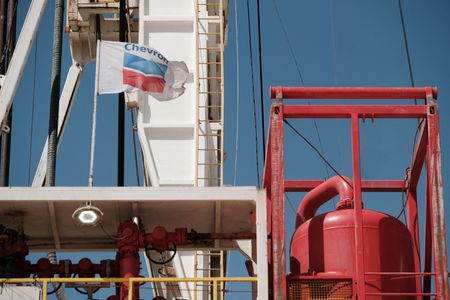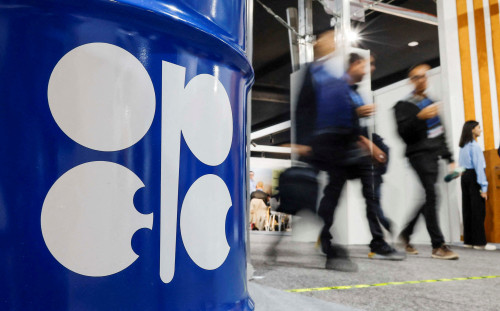By Sabrina Valle
(Reuters) – Chevron Corp on Friday said that its annual oil and gas production should stay near the low-end of the oil major’s guidance due to unexpected stoppages in Canada and Thailand operations.
The company last year delivered 3 million barrels of oil and gas equivalent per day (boepd) worldwide while forecasting production to be flat or rise 3% from those levels annually through 2027.
Wild fires in Canada led to temporary evacuations, the company said. An incident with a platform in Thailand that was taken to repairs earlier this year has removed about 10,000 boepd of net production “for the foreseeable future,” CEO Michael Wirth told analysts on Friday.
“Those two things are the ones that are pushing us down, both unexpected,” he said in an earnings call to discuss results published on Sunday.
For the current quarter, Chevron said it was expecting upstream turnarounds and downtime to reduce production by about 110,000 boepd.
Its shares were down 1% in afternoon trading.
CONCENTRATION
Chevron has been betting on the Permian basin, the largest U.S. oilfield, and on its 50% interest in Tengizchevroil (TCO) in Kazakhstan to boost production and revenue over the next years.
It, however, faces geopolitical tensions from Russia while also having setbacks with well completions in the Permian, with analysts inquiring executives on asset concentration risks.
About half of the $20 billion of free cash flow the company expects in the mid-term with oil at $60 a barrel are projected to come from those two assets.
“This idea that we are a two-asset company, the Permian and TCO, I don’t think really stands up to careful inspection,” the CEO said.
“They are two great assets. And so they get a lot of attention,” Wirth said, listing other assets from the Middle East to Argentina.
Chevron expects TCO’s expanded operations, which are 98% complete, to deliver more than 1 million boepd in 2025, and to pump about 1.1 million boepd from the Permian by mid-decade.
Its Permian production rose 5% from the first quarter to a record of 772,000 boepd, on track with its full-year guidance, the company said.
The No. 2 U.S. oil company also expects Permian output in the third quarter to be roughly flat before growing again in the fourth quarter.
“We’ve got a diverse portfolio, but we don’t need to be diversified just for the sake of it,” Wirth said. “We want to have assets that have scale and are material and long lived.”
(Reporting by Sabrina Valle in Houston, Arunima Kumar and Mrinalika Roy in Bengaluru; Editing by Shinjini Ganguli, Anil D’Silva and Marguerita Choy)







